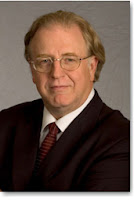RIO DE JANEIRO — If you want to see the future of journalism and the benefits of a free press, at least some of it can be seen in parts of this huge South American nation.
More precisely, look in the coastal city of Salvador in a small, multistory building on a steep and narrow street in a modest area of town just above the cargo docks that is home to the Ethnic Media Institute.
Look and learn from community journalist Thais Cavalcante, who publishes her own newspaper and lives in Rio in a favela — a slum where the poorest of the poor lives — that’s both a short distance and yet a world away from the sunny, shiny beaches of Copacabana.
And there it is again in the busy Rio newsroom of the brash newspaper Extra, where Fabio Gusman demonstrates how the light chat of social media can also become a serious tool to report breaking news and document police abuses.
From the top-floor windows of the Ethnic Media Institute in Salvador, you can see the Atlantic Ocean — and the future way news will be gathered and reported, courtesy of founder and executive director Paulo Rogerio and his colleagues. They use mobile phone and online technology to bring news, information and cultural information to minority communities undeserved or ignored by traditional news media here, particularly Afro Brazilians. They also proudly describe a new system where even those who live in rural areas where no Web access is possible can telephone into a system that transcribes and posts their dictated items.
At the downtown offices of Extra, the social media phenom “WhatsApp” has been shaped into a news-gathering tool that offers speed, reliability and a reach that makes every user potentially a reporter or videographer. One example: Video sent in a roundabout way to the paper (to protect the life of the person who recorded it on a cellphone) of narco-criminals firing dozens of rounds from automatic weapons at a soccer match they sponsored — video that eventually led to arrests, Gusman said.
Extra’s success has led at least one other newspaper to copy the technique — and the expectation is that more will reach out to “citizen-journalists.”
Calvacante labors each day to bring news and the needs of her community to fellow residents and to an outside world that has long ignored rampant crime and drug dealing, inadequate public services and corrupt police operations.
With a print circulation of 20,000 copies — important in a neighborhood where some cannot afford even low-cost Web access — and a digital reach beyond those papers, Calvacante doesn’t mince words about her role. Traditional media are racist and biased against favela dwellers, she said, seeing only the violence and rampant drug trafficking that plagues her community. “It’s important that we occupy this space,” she said of her community journalism, if only to give voice to those “doing good things.”
While all are different ventures, each represents a slice of how journalism of the 2st century is being shaped here: local, personal and multimedia; dependent-on but also exploiting the exciting possibilities of new media; and reporting to their readers and users but also carrying news of the community to the world beyond economic, racial and physical barriers.
Specialists at the U.S. Consulate in Rio, through a program to assist and advise community journalists, note that lower prices for Web access and cheaper mobile phones have helped propel the impact of hyperlocal journalism, even as traditional Brazilian news media experience a sharp wave of job cutbacks resulting from drops in advertising income that hit U.S. media more than a decade ago.
Not that long ago, another new medium — television — helped many in the U.S. see the scourge of segregation and the reality of discrimination that had existed for decades out of the sight and consciences of many white Americans. It’s too soon to know if something similar will happen here, particularly as Brazil faces economic crisis and political meltdown.
But even as they create a new future for journalism here — and an example for the world — Rogerio, Gusman and Calvacante also are advancing what in the U.S. are the First Amendment values of quality journalism and a free press: Serving as a watchdog on government and standing as a “tribune” — that Roman Senate member who represented those whose voices and needs were not being heard by the powerful — for their fellow citizens.
About the author: Gene Policinski is chief operating officer of the Newseum Institute and senior vice president of the Institute’s First Amendment Center. Email: gpolicinski[at]newseum.org. Twitter: @genefac.
This article was published by the Newseum Institute.
Subscribe to:
Post Comments (Atom)



No comments:
Post a Comment